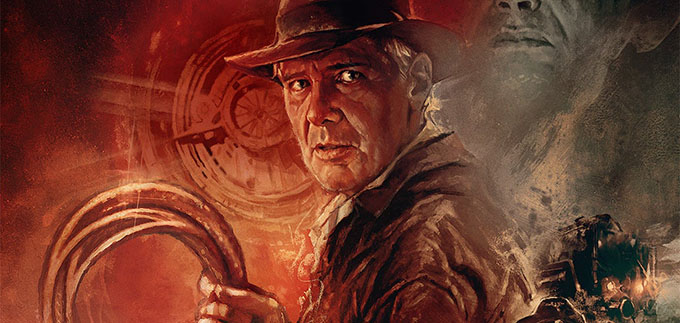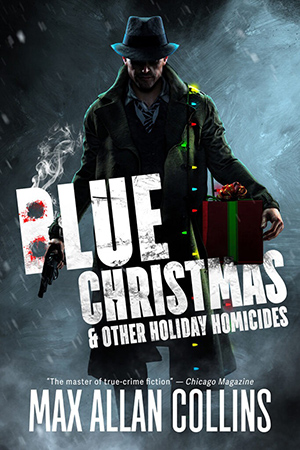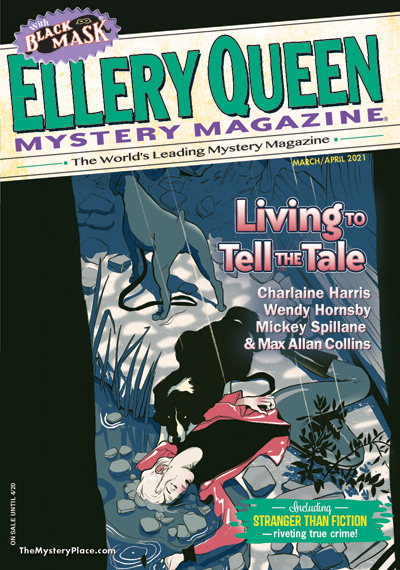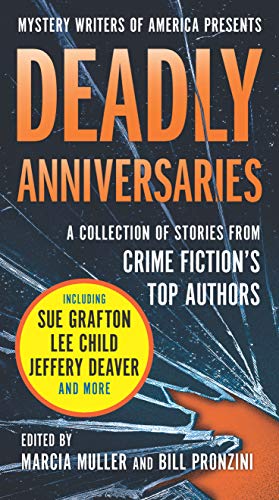I have completed Quarry’s Return and shipped it to my editor Charles Ardai of Hard Case Crime and to my longtime agent, Dominick Abel. This included a long day of re-reading the 60,000-word manuscript and another day of entering my tweaks and corrections, assembling the chapter files into one big file, and doing a conversion from Word Perfect to Word, followed by a page-by-page check for glitches (and there were some).
This was something of a test case for me, as I have (as regular readers of this update/blog know) been dealing with health issues. My wife Barb has been encouraging me to slow down the writing process, and I have to a degree, but my approach is dependent to some degree on momentum, so I like to get a book done in as short a time as possible because I believe the narrative drive benefits.
This is the second novel I’ve written this year. The Mike Hammer novel, Dig Two Graves, was written starting in February and March. It’s a fairly short book, about 50,000 words, and I wrote it in three weeks, which impressed and sort of irritated Barb, who spends six months on her Antiques drafts before handing one over to me.
Between the two books I’ve written several book proposals, a short story with Matt Clemens (just sold to Ellery Queen Mystery Magazine!), and revised a couple of screenplays. Also, we completed the expansion of the Mike Hammer’s Mickey Spillane documentary and the edit on Mickey Spillane’s Encore for Murder, both with VCI releases yet this year.
The month I spent on Quarry’s Return included my hospital visit for a heart procedure, followed by a complication from which I am still recuperating (but doing very well). I only lost about three writing days due to the procedure – writing seems to be something I can do and feel “normal” doing, even when I’m under the weather.
Quarry’s Return is a coda to a coda, the latter being Quarry’s Blood. I did not expect to be writing about the older Quarry again (the Quarry who is about my age), but that’s the story that occurred to me and that my editor liked the sound of. What transpired was a novel that took Quarry back to Port City, Iowa – the site of his first recorded adventure, Quarry AKA The Broker (1976) – which plays into the title and to the coda of coda notion.
Will there be more Quarry? As long as there is more of me, probably…though any subsequent Quarry novel will likely be set in the past, as the other HCC Quarry books have been.
Quarry’s Return feels like a good one, but until I hear from Charles and Dominick, I won’t know for sure. Turning a novel in can be followed by requested rewrites in some cases. To me, it’s a nice combo of the Richard Stark-inspired crime novel side of the series and the Mickey Spillane-inspired private eye aspect of the series…in addition to being a hitman (various varieties of which depend on where a story falls in the timeline), Quarry often acts as a sort of P.I. That’s even got him occasionally nominated for a Shamus award from the Private Eye Writers of America.
The novel also has my trademark combination of human sentiment and inhuman behavior that no doubt confuses some, and keeps me off some readers’ preferred reading list.
I don’t recall when it’s scheduled to come out. Probably 2024. I’ll let you know here.
I have several meetings this week as we move into serious pre-production on my micro-budget movie, Blue Christmas. We suffered a blow when (apparently) we did not receive any Greenlight grant money. That parenthetical “apparently” reflects the failure of the program to come even close to when they were supposed to reveal the results of the competition, which they haven’t officially yet.
This blow puts us further into the micro budget area, and decisions have to be made, and will be made shortly. But unless my health intrudes, I intend to will this sucker into existence. I have great help from my collaborators Phil Dingeldein, Liz Toal and Chad Bishop.
I want to spend at least part of the next few years returning to film projects – sort of my last chance to do so.
Phil and Liz and I, and my Hollywood “guy” Ken Levin, are working hard to get my horror film Reincarnal made. Some of you have read the novella it’s based on, the title story in a Wolfpack collection of mine (Amazon link). [And in the soon-to-be-released Max Allan Collins Collection Volume Four: Dark Suspense (Amazon link) – Nate]
I am in early stages of working with Phil, Mike Bawden and the great Robert Meyer Burnett to create a Heller podcast series that would, we hope, seed the clouds for a Nathan Heller movie or TV series. A long ago project that I was working on for (and with) the late Miguel Ferrer – a film based on my novella Dying in the Post-war World – is in the mix.
We still have an eye on getting Road to Purgatory produced. I have the rights back on my screenplay from my novel, the direct sequel to Road to Perdition.
Other things whirling in the currently strike-stalled land of the wooded holly: the recently announced Mike Hammer feature film from Skydance; a Nolan movie from Lionsgate; and an Eliot Ness in Cleveland mini-series from CBS Films.
Sounds glittering and great, huh?
If I were confident about the big-time stuff happening, would I be preparing to do a micro-budget Christmas movie?
I ask you.
Among the bad things about writing a weekly update like this at my age is how many people I admire do us the disservice of dying.
But two of my favorites have passed and I must comment.
Rodriguez is a musical artist I discovered recently, thanks to my guitarist in Crusin’, Bill Anson, turning me onto him. I’d had the documentary Searching for Sugarman (2012) on my DVD shelf for some time – my agent gave it to me for Christmas years ago – but had not gotten around to watching it. I finally did, and if you haven’t seen it, you need to.
The basic story is simple if incredible. A talented singer/songwriter out of Detroit, Rodriguez made two wonderful albums (Cold Fact, 1970, and Coming from Reality, 1971) that were mostly overlooked by critics and completely overlooked by the public. He returned to a life divided between playing in small venues and doing day labor, taking great pride in the latter. He essentially fell off the national grid, and legends grew up about him dying on stage, sometimes committing suicide at the end of his set. He became huge in South Africa and popular in Australia, as well, and continued to be unknown here until the documentary came out in 2012.
Some of you know that I am not a fan of Bob Dylan the vocalist, though I like much of his songwriting. His nasal off-key singing is fingernails-on-the-blackboard stuff to me, though I find it interesting that both Tom Petty and John Lennon used him as a vocal role model, but did so by restoring the concept of singing in key.
Rodriguez is often compared to Dylan, but it’s a pretty shallow comparison. You can’t deny Dylan was a prolific singer/songwriter, and his catalogue of compositions is staggeringly large and impressive. Rodriguez did two albums of beautiful melodies and poetic skill in a warm, eccentric vocal style that displayed a limited vocal range but is the perfect vehicle for emotional material delivered from a cool distance.
He’s great.
And he’s gone, at 81. After his discovery made him if not a household word but at least well-known among popular music buffs, new albums from him were limited to a couple of live performance CD’s. He copped to having continued his songwriting all those years, but no new album emerged. I am hopeful that there’s a vault somewhere at his regular label, Light in the Attic Records, that will bring more of his material to light.
My friend Bob King edits the great Classics Images (published right here in Muscatine, Iowa), in which he covers all kinds of wonderful mainstream and obscure aspects of classic Hollywood. I always check the obituaries (like George Burns, I’m checking to see if I’m there) and now and then a shock comes to the system: Barry Newman has died at 92.
Barry Newman was – no, damnit, is – one of my favorite actors. He came out of the gate fast and was a popular leading man and unlikely action star in the 1970s. He top-billed the cult classic Vanishing Point (1971) as well as Fear Is the Key (1972), and The Salzburg Connection (1972). He later became a star of TV movies, headlining twenty films in the ‘80s. Later he turned up now and then in bigtime films like Daylight (for which I wrote the novelization), The Limey and Bowfinger. But largely he fell off the radar. I never understood that and still don’t.
He made his first splash in The Lawyer (1970), which was based on the Sam Sheppard murder case and evolved from an intended biopic of then famous attorney F. Lee Bailey. His charismatic performance as the title lawyer, Anthony Petrocelli, led to a TV movie (Night Games 1974)) as that character and the two-season, Emmy-nominated Petrocelli TV series (1974-1976). The showstopping aspect of The Lawyer was Newman’s outrageous courtroom performance topped by his summation to the jury, in which he presented an alternate version of the crime to interpret the facts that ultimately got his client sprung. This trademark jury summation followed Newman and the character into the series.
Much of Newman’s success in The Lawyer is due to the dynamic direction of Sidney J. Furie, who put Michael Caine on the map in The Ipcress File (1965). But Newman rose to the occasion.
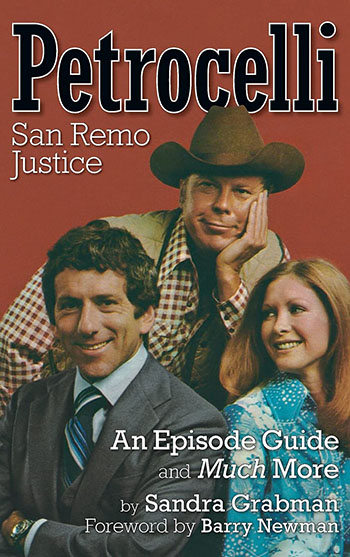
I got in touch with him a few years ago, in part because I’d written an introductory piece about The Lawyer and Petrocelli for a Bear Manor Media book about the TV series. Mostly I wanted to get in touch with him because it was The Lawyer (more than The Fugitive) that made me want to do a Nathan Heller novel about the Sheppard case.
When I called him – this is typical Newman behavior – he answered in an old man voice and pretended to be his own grandfather. When he determined who I was, and that I was worth talking to, he became Barry Newman again and might have been thirty or thirty-five, judging by voice alone. We had several wonderful phone conversations and I sent him my Sheppard “Nathan Heller” novel, Do No Harm (2020). He is thanked and recognized in both the text of the novel and the afterword.
He was very complimentary about my essay about him and his work on The Lawyer, and was nice enough to say that my piece was his favorite thing in the Bear Manor Media Book, which you can buy here.
The TV series is available here.
Unfortunately The Lawyer is not available legally on physical media, other than in the wonderful but expensive Sidney J. Furie boxed set currently out of print (but you can find it on e-bay).
The Lawyer is available on Amazon Prime.
I intended to call Newman to congratulate him on the Blu-ray box with The Lawyer finally doing him and that film justice. But I hadn’t got around to it. I do know that he and director Furie were trying to put a movie together with Newman starring. This was just before Covid hit.
But somehow I find it reassuring that in his late eighties, Barry Newman was looking for the next project.
I mentioned here that Robert Meyer Burnett’s enthusiasm for To Live and Die in L.A. (1985) had found me ordering a film that I’d despised in the theater on its first release.
I do occasionally discover a film I’d not enjoyed years ago turning out to strike me differently today. But I am more inclined to continue liking the films that I liked then. If you had asked me for a list of my favorite films, in 1985, I’d have said, Vertigo, Kiss Me Deadly, Gun Crazy, Chinatown and How To Succeed in Business Without Really Trying (can you spot the non-noir in that list?). I would have cited Alfred Hitchcock and Joseph Lewis as my favorite directors, and James Bond as my favorite film series. Hardly any change.
Revisiting To Live and Die in L.A. was a different ride. First off, its star – William Peterson – I have always liked, going back to Manhunter (1986) and Long Gone (1987); and I did (with Matt Clemens) my long run of CSI novels, comics and even video games with Peterson playing Gil Grissom not only on TV but in the theater of my mind. He even spoke my dialogue in the CSI video games.
What quickly became clear to me (I’d probably noticed this on first viewing, too) was that director William Friedkin was doing a West Coast variation on his very successful East Coast cop thriller, The French Connection. I’ve liked a lot of what Friedkin did, but I don’t think he ever topped The Exorcist and The French Connection.
His work generally strikes me as that of someone who is a great storyteller but not a great writer. He is at his best adapting a novel or play or non-fiction work. Left to his own devices, he can create a vivid movie filled with compelling scenes, and To Live and Die in L.A. certainly qualifies in that regard.
And it’s based on a book, but not a particularly good one. I don’t like to comment on other novelists’ stuff, so that’s all I’ll say.
But this narrative, as presented by Friedkin, has so many cliches, it’s no wonder it pissed me off in 1986. And, look, Friedkin was thinking about doing my True Detective and did this movie instead, which at the time undoubtedly pissed me off. Still, this is a movie that begins with the young lead character’s veteran cop partner having only three more days on the job, with only one dangerous gig ahead. This is a character who says the immortal line, “I’m getting too old for this shit.”
It’s also a cop movie where the naive, idealistic new partner eventually becomes the continuation of the corrupt veteran partner who has died in the line of duty. That this is an unbelievable character shift is in no way justified.
Many of the semi-improvised scenes work, a good number do not. It does have some interesting female characters and a car chase designed to out-do the famous one in French Connection. And it comes very close.
I now like this movie, with reservations. Like a beautiful pock-marked woman. SPOILER ALERT: …… killing the lead with fifteen minutes of the movie left was a bold move that irritated me then and makes me smile and nod now.
Incidentally, I accidentally ordered the Blu-ray, not the highly regarded 4K disc. They share the same transfer and special features and I thought it looked fantastic.
I should say that the fuss over 4K may be at least partially dependent on the size of your TV. I have three TVs – a 55″ flat screen in the living room (with a shallow viewing distance between my recliner and the screen), a 45″ TV in my office, and a 19″ tube TV also in my office, for viewing laser discs. The 55″ is from a brief period where you could find monitors that could present both 3-D and 4K. My 45″ is 3-D but not 4K.
Why do I mention this? Because some people say that you need 65″ or larger to appreciate the difference between Blu-ray and 4K. This isn’t entirely true, but there’s something to it. The Blu-ray of To Live and Die in L.A., which I almost sent back unopened to exchange against the 4K, really does look excellent on my 55″ screen.
And for me having the ability to screen 3-D is a must. I have too deep a 3-D library to feel otherwise.
I am also not as attuned (shall we say) to sound. I have a sound bar with a sub woofer and to me everything sounds great. Terms like Dolby Atmos and DTS and 7.1 are outside my area of interest and expertise. For one thing, the reality of my life is that once Barb goes to bed (at 10 pm) I can’t watch anything loud, anyway. I usually watch with subtitles, and still get scolded by the angry woman who storms out, my charming understanding bride having been somehow absconded and replaced by this unforgiving one.
It’s not unlike my situation where my collector gene comes in conflict with my realization that at my age, I have better ways to spend my time and money than upgrading everything from Blu-ray to 4K, and spending big bucks on collector sets with lobby cards and booklets and do-dads that I’ll look at once, smile, and stow away.
Here’s an article about filmmaking in the Quad Cities, covering a gathering at Phil Dingeldein’s dphilms stuido.
M.A.C.
